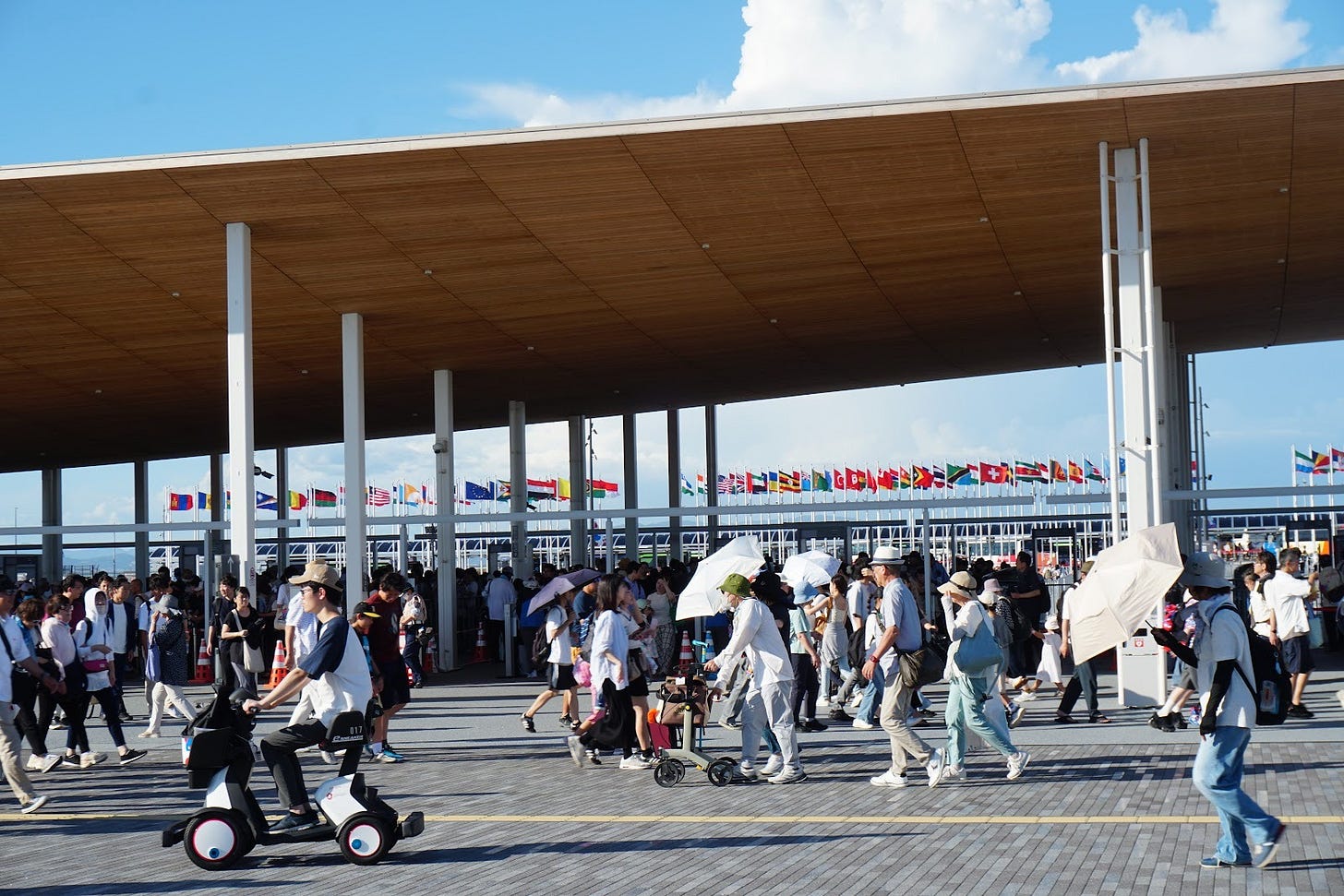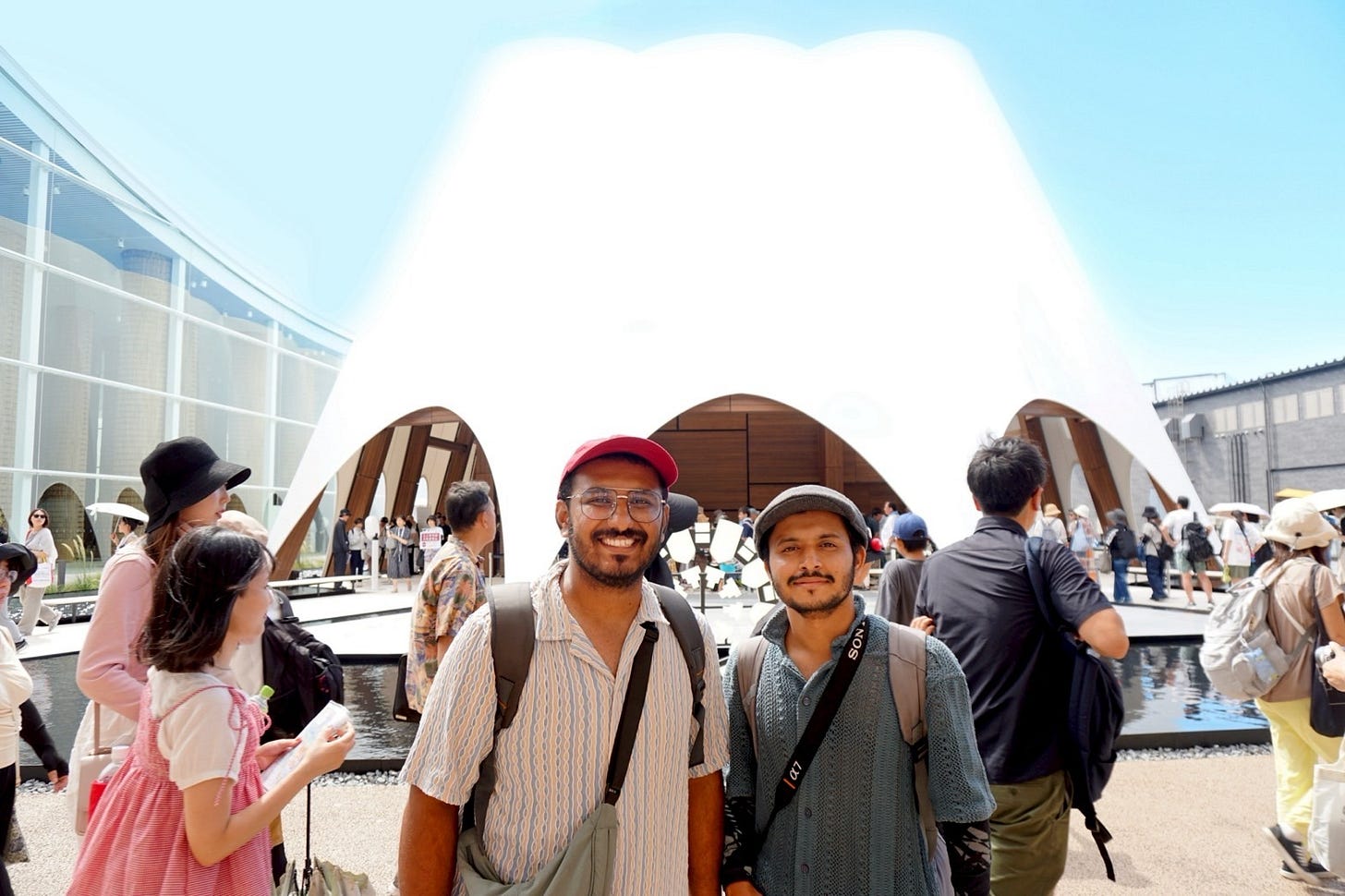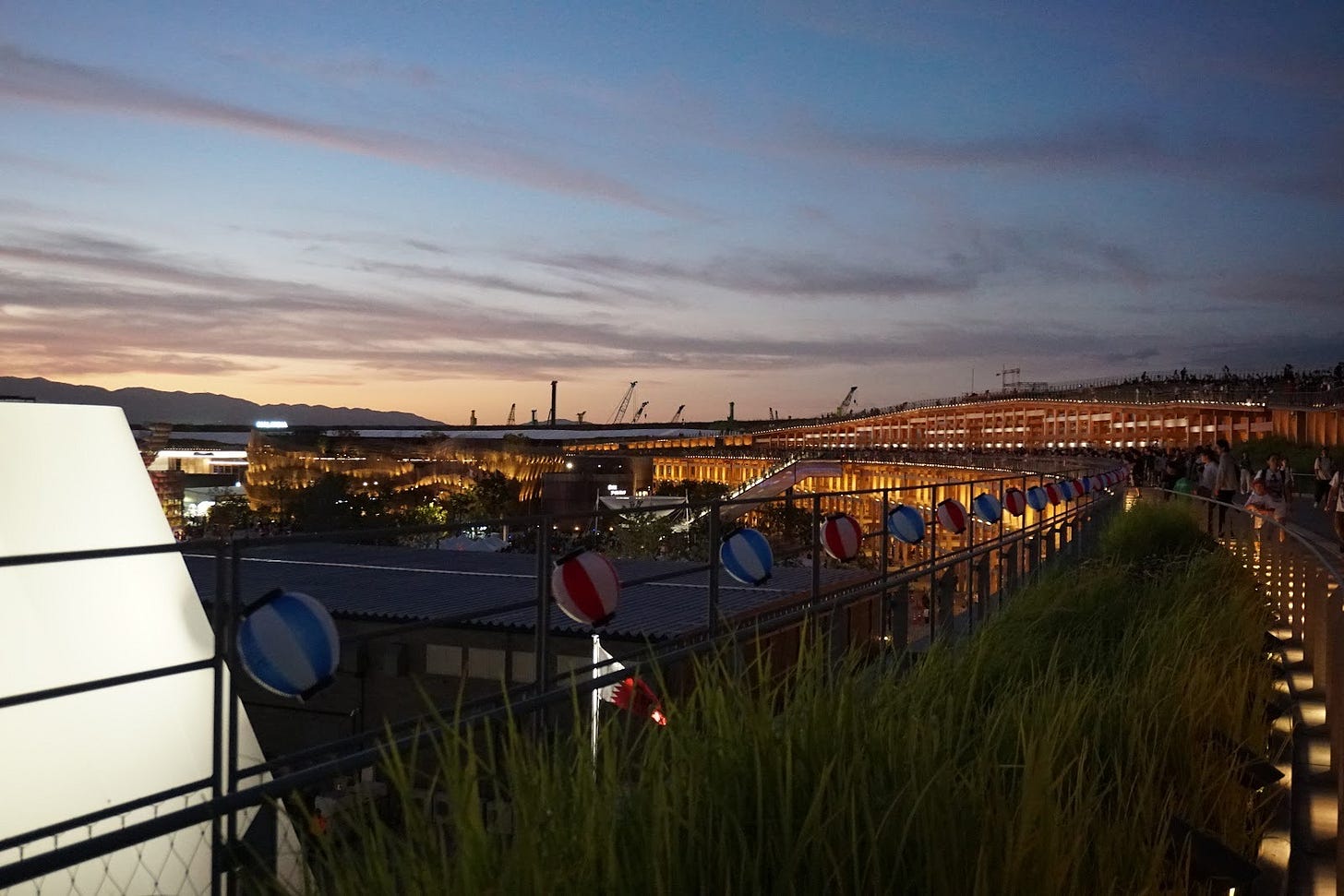Voices From Expo 25: Inside an Imperfect Showcase
With outages, infestations, and language gaps, Expo 25 wavers between mismanagement and marvel, its promise kept alive by people who still show up.
Underneath the golden burning sun, Expo 25 in Osaka stands as a beacon of humanity’s achievement and quest for peaceful coexistence. But that beacon has been plagued with issues. Almost weekly, news of new problems surfaced until the point of this article’s publication. There was a massive fly infestation reported on May 26, 2025. There was a power failure on the main metro line connecting the Expo to Osaka’s city center on Aug. 14 that left over 30,000 visitors stranded on the artificial island in the middle of Osaka Bay.
Since its inception, the Expo has faced seemingly insurmountable odds. Spiraling costs and structural concerns, coupled with bad management and poor ticket sales, have contributed to increased media scrutiny, and the government only breaking even on its investment in August, almost 4 months after the Expo opened its doors to visitors in April.
The Expo’s organizers expected the event to bolster Japan’s image as a major economic and political powerhouse, similar to how Expo 70 did for post-war Japan over 50 years ago.
Since the Expo 70, Japan’s economy has stagnated. These years have been dubbed the “Lost Decades,” and the government was hoping Expo 25 would help jump-start the Japanese economy with an infusion of new tourist dollars and investments. As part of our coverage, we asked visitors their thoughts on Expo 25’s success and their views of Japan.
Hot and Difficult, Long Queues with No Seating
In front of the Qatar Pavilion, underneath the Expo’s Grand Ring, we met Pranit from India. When asked about the Expo, Pranit mentioned that Expo 25 provided the world with much-needed optimism for the future of our civilization. Regardless of the optimism Pranit mentioned, however, he noted that the Expo could add more seating arrangements for visitors. Pranit wasn’t alone. Throughout the Expo’s Grand Ring, one of the very few spots in the event that offers visitors a spot to shield themselves from Japan’s sweltering summer heat, we find many visitors, many of whom came with their families, sitting on the ground and taking a rest. The organizers themselves seem to be aware of this mismanagement and have added multiple seating and resting zones for visitors. However, the Expo site’s design did not allow for a greater allocation of seating, so most visitors had to make do with sitting on the grounds in and around the Grand Ring or any of the pavilions that offered shade.
At certain pavilions with huge numbers of visitors, such as the United States Pavilion or the French Pavilion, the queues could last for hours, with one user from Reddit mentioning that the average walk-in wait time lasted for anywhere from 45 to 60 minutes, with restaurant queues lasting somewhere around 30 to 50 minutes. This made the journey around the Expo “hot and difficult,” said Priscilla from Nigeria and Diane from France. The duo had traveled to the Expo in hopes of a good hosting at the Expo, given Japan’s global image of being organized. Upon arrival, they found the Expo did not fully meet their expectations. Priscilla mentioned that everyone is polite, and the organizers have kept the site extremely clean. However, she found some pavilions to be difficult, due to the heat and the long queues. Both Priscilla and Diane had taken note that the Expo is not as multilingual as it is supposed to be. The officials of Expo 25 are English, French, and Japanese, yet they found that most signs were written only in English and Japanese, which made navigation for those visitors who possess limited language capacity difficult. Both Priscilla and Diane agreed that the Expo has improved Japan’s image in regards to tourism.
‘I wondered about the reputation of the event even before it was held.’
Continuing the path along the Grand Ring, we met Miyuki, a visitor from Osaka’s nearby Nara Prefecture. Dressed in the traditional Japanese Yukata dress, Miyuki decided to take a train ride to Osaka to attend the Expo and see it in person. “This is my first time (attending the Expo). I wondered about the reputation of the event even before it was held and whether it would have a good reputation or not, but now that I’ve been here, I’m really enjoying it,” Miyuki stated. Every day, countless Expo visitors attend with the same skepticism as Miyuki. It is because of the constant scrutiny by both the Japanese and international media on the Expo’s failures and mismanagement.
Unfortunately, visitors’ concerns have not been unfounded. Expo 25 has been plagued by mismanagement and conflicts since the day its plans were announced to the public. Originally budgeted at around $426.7 million, the costs skyrocketed to over $806 million by the end of the Expo’s construction. While the event’s organizer has mentioned the pandemic and the yen depreciation as reasons for the costs and delays, the overall outcome of the Expo is not what many had expected. With the reported bug infestation around the Expo site and facility suspensions due to legionella bacteria infections among visitors, the Expo has taken a downward turn. This has created overall public disinterest in the event, resulting in underwhelming ticket sales.
The pre-existing bad publicity of the Expo, however, did not deter Miyuki; rather, she decided to see for herself whether the Expo’s poor reputation was accurate. “I think it would be great if we could preserve the old state of things for the future using the latest technology, and I wonder what it would be like. I think it would be great if a new culture that is created by mixing various cultures could be born in the future,” Miyuki concludes.
As the sunset draws near and crowds gather for the fireworks and water shows at the Expo’s Water Plaza, Expo 25 has shown us a one-of-a-kind study in contrast. While visitors mention that long queues, summer heat, and language gaps have dampened parts of the experience, many visitors on the ground, just like Miyuki, found optimism, politeness, cleanliness, and moments of wonder that hint at the Expo’s original promise as it was established in 1851. The reality sits somewhere in between: an ambitious showcase strained by logistics, but animated by people who show up hoping to glimpse a better future. Somewhere along with these factors, the remainder of the Expo can better reflect the ideals it set out to celebrate. A reflection in the voices of both frustration and faith. That mix, more than any pavilion, rather seems to capture what this Expo has become: an imperfect, contested event, and still, for many, worth the trip.
Editorial contributions by Rachael Rhine Milliard
The views and information contained in this article are the author’s own and do not necessarily represent those of The Asia Cable.






